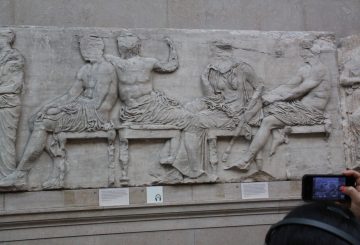 A cave found in February 1990 in the South West of France seems to be the theatre of the oldest cave with a human shaped camp.
A cave found in February 1990 in the South West of France seems to be the theatre of the oldest cave with a human shaped camp.
Néandertal à Bruniquel by CNRS
“It is from 2013 that a research team, with the support of the regional service(department) of the archaeology of Drac Midi-Pyrénées, threw(launched) a new series of studies and analyses. Besides the 3D statement of the structures of stalagmites and the inventory of elements establishing(constituting) the structures, the magnetic study, which allows to reveal the anomalies caused by the heat, allowed to establish a card(map) of the burned vestiges found in this part(party) of the cave. These fires(lights) represent, prejudice, simple points of lighting.”
“The first ones Néandertals: explorers and builders?

The existence of these structures was already in itself surprising, almost unique(only) in the archaeological register, any confused(merged) period long. For the Prehistory, it is indeed necessary to wait for the beginning of the recent Palaeolithic in Europe, and punctually in South-East Asia or in Australia to note the first long-lasting raids of the Man in the underground environment(middle), beyond the daylight. They are almost always drawings, engravings, paintings(paints), as in caves Chauvet (-36 000 years), of Lascaux (-22 000 in – 20 000 years), of Altamira in Spain or still Niaux (-18 000 in – 15 000 years for both sites) and, exceptionally, graves (cave of Cussac, Dordogne: – 28 500 years). Yet(now), to Bruniquel, the age of the structures of stalagmites is very previous upon the arrival of the modern Man in Europe (-40 000 years). The authors of these structures would thus be the first men(people) of Néandertal, for whom the scientific community supposed no appropriation of the underground space, or a control(master’s degree) so sophisticated of the lighting and the fire(light), and almost more constructions so elaborate.”
For a further reading, click here






![[Chapter 14] Kashif Nadim Chaudry](http://heleneherniou.com/cliophile/wp-content/uploads/2015/01/nadim-chaudry-360x245.jpg)

You must be logged in to post a comment.